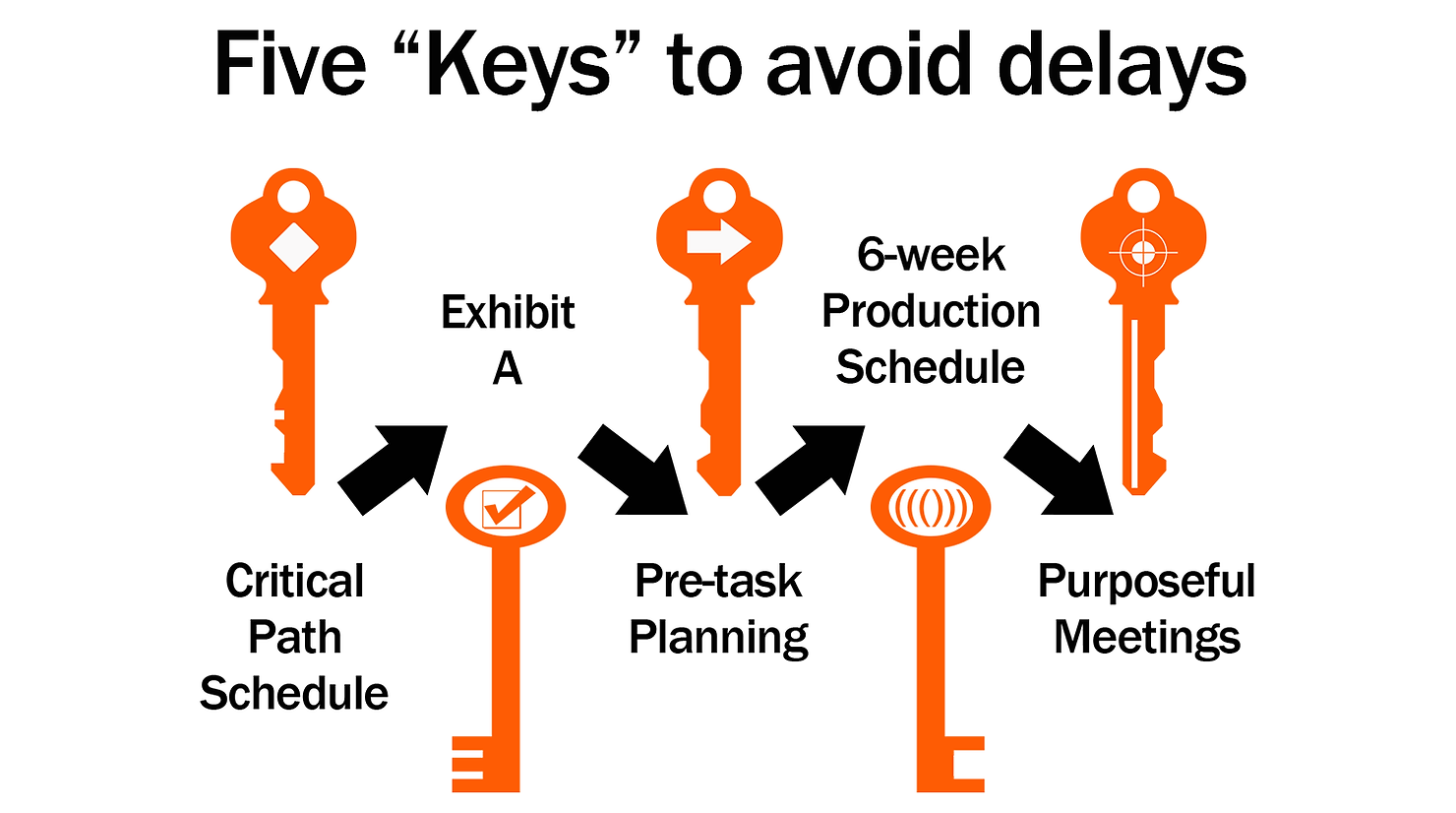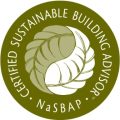Thank you for following this blog series on how preconstruction strategies can be leveraged to prevent delays and change orders. The prior post of this series outlined an approach to minimize Requests for Information (“RFI”s) along with the change orders and delays they often create. Among the many co-benefits realized by fewer RFIs is increased bandwidth for your team members. Today’s post is about how to leverage that newfound bandwidth to stay ahead of, or at least in front of the issues most likely to slow your project (and your revenue) down.
As we discussed in the last post, even when change orders and delays are approved, they only recover a portion of the actual costs and none of the opportunity costs of not being able to start your team on the next project. Plus there is the substantial task of rescheduling delayed work and the new project that has to wait for the current team to finish up.

Since time is money, the best way for project teams to increase revenue is to expedite the schedules of the work in progress. Of course expediting complex projects is no easy feat and it most certainly requires more and better management to achieve. This is why preserving bandwidth is so important. To succeed at the highest level, we need time and focus for preparation that will attract commitments from the key participants involved.
Throughout my experience on projects, I have found five key procedures that, when executed properly, dramatically improve production, quality and team morale. Of course any procedure can be “mailed in” or “nailed down” and anywhere in between. Teams that thoughtfully incorporate these procedures consistently get the results they target.
When properly performed, these five key procedures will:
-
Reveal any gaps in the scope or constructability issues with enough time to resolve them.
-
Leverage mockups and submittals to support production goals.
-
Ensure materials are ordered and delivered on time.
-
Provide adequate notice to ensure you have manpower on site when you need it.
-
Verify site logistics supports sequencing and production needs.
-
Identify any safety, noise and inspection challenges with time to mitigate.

1. Project Schedule and Milestones. The prime contract requires a schedule to complete the work and includes terms to compensate or protect the owner if the timeframe is not met. The architect will use this schedule to certify monthly draws and validate delay claims. The schedule must include enough time to complete all of the work but more importantly, it must identify the critical tasks that must be completed in an order that culminates in substantial completion (the “critical path”). The completion of these critical path tasks result in milestones such as “slab poured”, “wall cover” or “roofed in”, etc. These milestones and path are used as a feedback mechanism in other key processes to ensure that potential delays are timely discovered, communicated and mitigated or processed appropriately. It is impossible to overstate the importance of this document.
2. Commitments and accountability. The best time to get production commitments and buy-in from key participants is pre-award. During interviews, identify the critical path milestones and the appropriate resources and durations required to meet them. Include these production commitments in the contract exhibit “A” along with the scope and exclusions. This is buy-in step #1.
3. Pre-task planning meetings. Buy in step #2 is to plan out each major scope of work with all of the parties that need to be involved. Today’s assemblies often involve special inspections, specialty consultants, factory representatives and others that need to be plugged into your plan. Use a formal agenda that includes:
-
A complete list of all pre-mobilization tasks, responsible parties and deadlines to complete them.
-
Detailed sequencing plans with inspections and cure times.
-
Site logistics plan to validate delivery and stockpile locations, work access, safety risks and quality control measures.
Just as important are the things you don’t know. What constraints dictate the level of production attainable? What issues most commonly create delays? Depending on the trade, this meeting should happen at least 45 days prior to the scheduled start date.
4. Dynamic look ahead schedules. Buy-in step #3 is regularly updating all subcontractors about what they need to do to meet your schedule. These updates come in the form of detailed schedules that detail six weeks of sequencing by trade that is updated and distributed every week. We all know that schedules change, having a regular procedure in place to communicate and make adjustments keeps everyone on the same page and maintains accountability with the least amount of effort. Make sure that all critical path milestones and pre-task meeting dates are indicated on these schedules to activate the feedback mechanism to track progress versus contract requirements.
Pro Tip: Best practice is to distribute a draft to key supervisors each week, resolve any concerns and publish and review the final version at a weekly production meeting.
5. Purposeful meeting agendas. Use your meeting agenda to cause owner and design decisions to support your critical path schedule. A purposeful agenda is a practical tool you can use to track decision making and information transfer, which if not timely resolved will manifest into delays and increased costs. Use these best practices to help them help you:
-
Review 6-week production schedule and specifically point out any architect or owner involvement required.
-
Include next step, responsible party and deadline dates for each task on the agenda.
-
Send out reminders 48 hours before each meeting to review and address active tasks on the agenda.
-
Keep discussions focused on meeting objectives. What do they need from whom, when do they need it, when can they issue what you need, etc.

The effectiveness of these “keys” on your projects is dependent on the care and commitment spent administering them. Delivering a project on time is incredibly challenging and the stakes are high. A good plan makes people feel confident, confident people tend to commit and committed teams are likely to succeed. These five procedural keys help everyone look like a pro, give us the best opportunity to succeed and reduce the number of less pleasant conversations we will need to have (and endure).
Of course for these procedures to have maximum effect, they need be optimized to mesh with your operational and supervisory systems and structure. But that need not be a barrier to entry – templates and user-friendly procedures, leveraged with technology can make these keys easy to integrate, perform and monitor. Please let me know which tips and tricks are working best for you. If there is anything I can do to help you capture the benefits of these “keys” – hit me up! Next week in the Perfect Project series…the Project Master mindset.
Thanks…Chris



